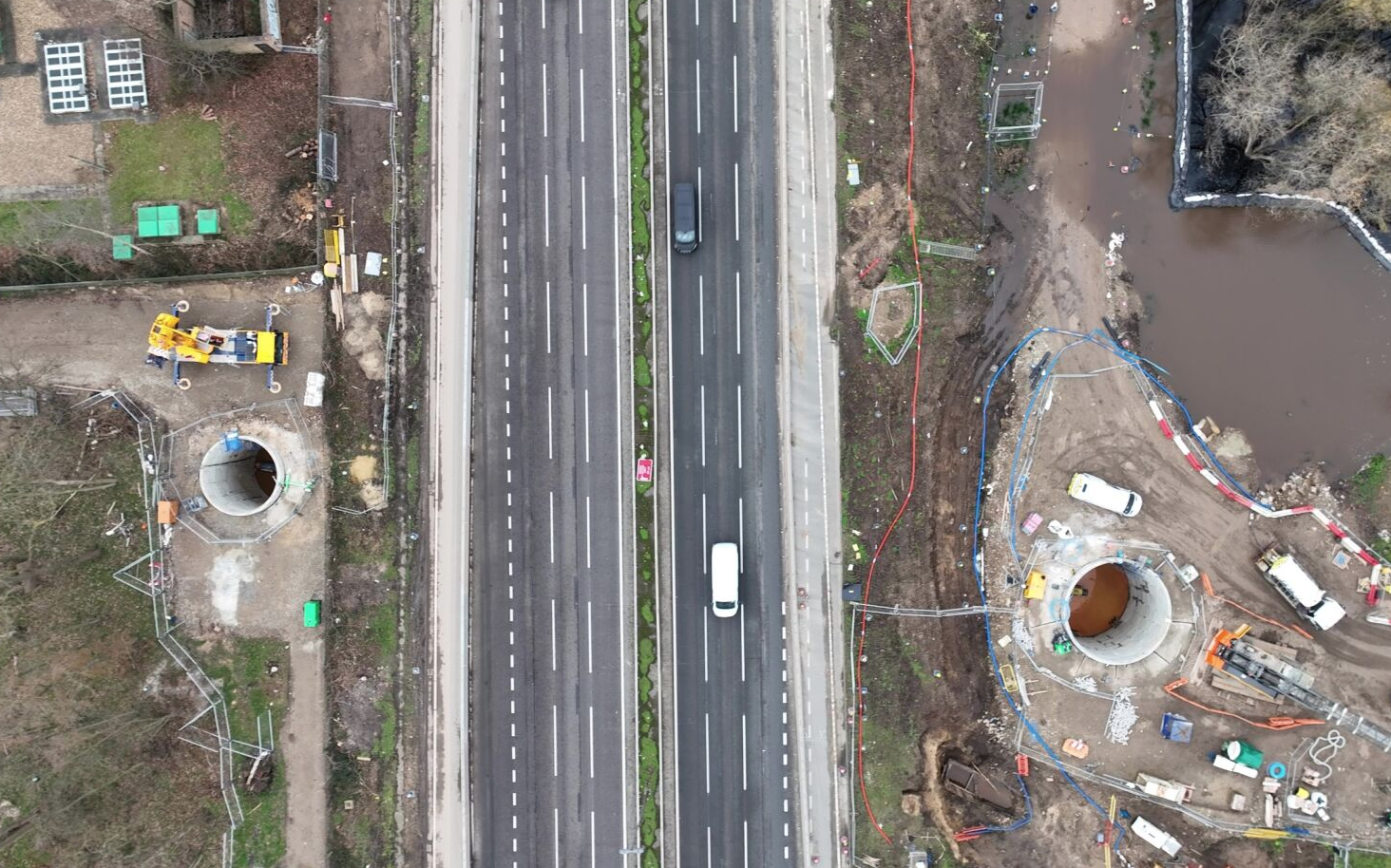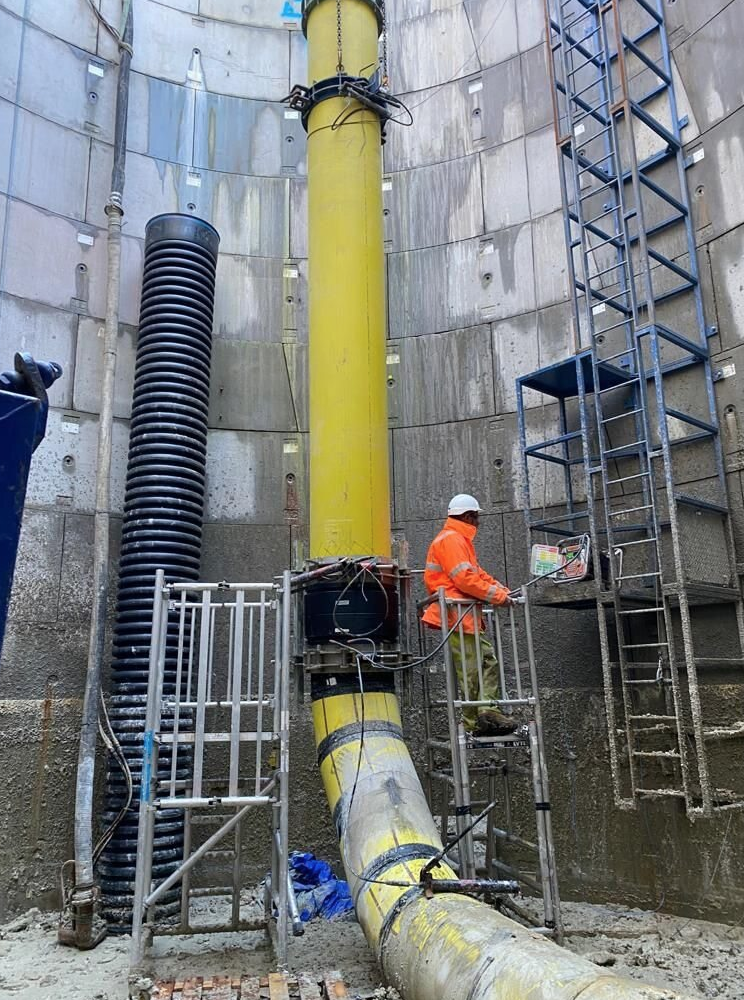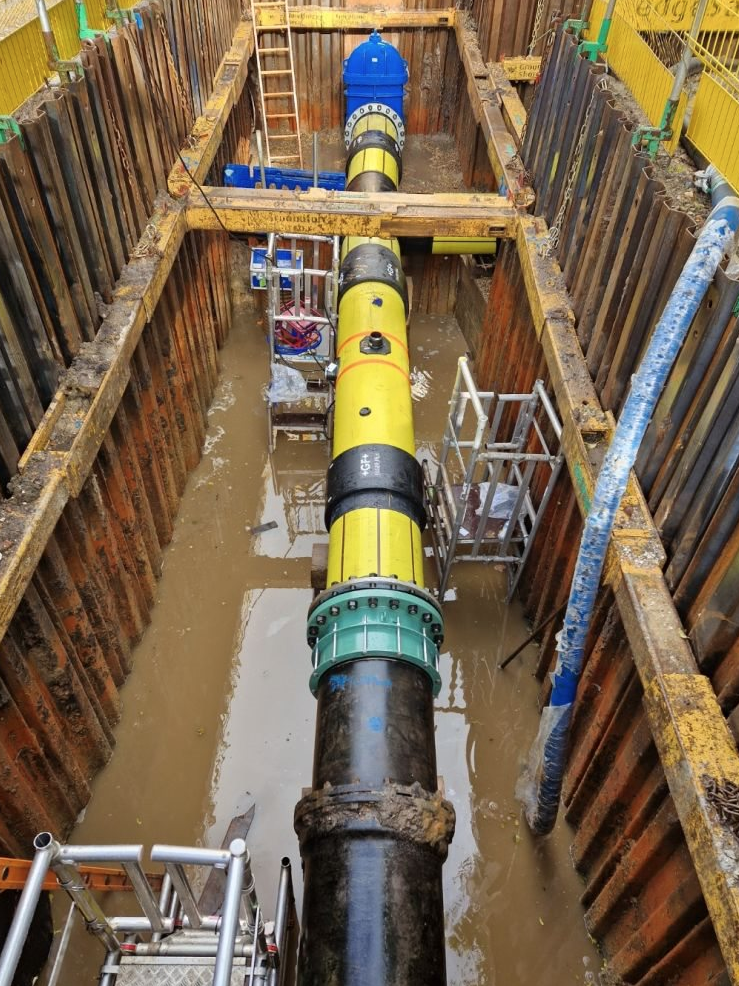 Abraham Lincoln
If given the truth, the people can be depended upon to meet any national crisis...
Abraham Lincoln
If given the truth, the people can be depended upon to meet any national crisis...
 Guildford news...
for Guildford people, brought to you by Guildford reporters - Guildford's own news service
Guildford news...
for Guildford people, brought to you by Guildford reporters - Guildford's own news service
M25 Junction 10 Project Required Major Engineering to Overcome Pipeline Snag
Published on: 21 Apr, 2024
Updated on: 21 Apr, 2024
By Chris Dick
Images provided by National Highways unless stated
A further closure of the M25 between Junction 9 and Junction 10 with the A3 has been announced. It will take place between 9pm Friday, May 10, and 6am Monday, May 13. The closure is thought to be related to further bridge and gantry installation.
Commenting on the overall progress, National Highways (NH) said delays and unexpected problems can be expected with any major project and the £317 million M25 Junction 10 upgrade is no exception.
And The Dragon discovered that recent wet weather has only exacerbated one major snag that had to be overcome. NH gave a graphic account.
Although it was known there was a gas main running alongside the A3 southwards to Ripley, its precise location could not be determined, so workers were unable to sink the support pilings for the “natural” bridge on the south (Ockham) side of the road causing a delay of about two months.
The natural bridge is the first of its kind in the UK and required additional government financial approval of £2.3 million.
To overcome the gas pipe problem, a 4.2 km pipeline diversion from the last known location on the north side of the A3, to pass under the dual carriageway via a 1.2 metre-wide conduit, had to be constructed.

12-metre deep, 8-meter wide hole with the drill cradle in positiion for the horizontal bore under the A3.
The first step was to sink a 12-metre deep, eight-meter wide shaft then fill the bottom two metres with concrete to support a cradle for the drill to bore the hole for the conduit.
With the tunnel under the A3 completed and new pipe connected, the trench alongside the A3 had still to be backfilled.
But then considerable rainfall caused the 4 km trench to flood. Although the team was well equipped with pumps, even with them working at full capacity, it was not possible to prevent the trench from filling up.
The effect was potentially disastrous. The new plastic pipe – which at this stage was fully operational, carrying gas – floated to the surface. A fracture was now a real risk.
National Highways, who said they often get blamed for things that have nothing to do with them, immediately employed commercial divers to place supports along the length of the pipe to ensure it wouldn’t buckle and break.
Shortly after, with disaster averted, the M25 was closed in mid-March for the first time since 1986 for the removal of a bridge.
There were a number of complaints from motorists. But behind the scenes it was another matter altogether, there was much relief.
National Highways said every hour of the closure, night and day, was accounted for with animations to brief the 300-plus staff involved. Every item required was in place and accounted for. Politicians at every level, haulage companies, travel hubs, emergency services and the press and media were all briefed.
Two weeks before the closure received its go-ahead, a meeting took place between the NH and contractors Balfour Beaty to ensure everything was ready. Checks were also carried out to ensure that no major events would be jeopardised and the public was made aware of the impact this closure would have on alternative routes.
NH say that there may be more setbacks to overcome and there will be more planned closures with at least a two-week notice period beforehand.
But by around Summer 2025 the agency hopes that the closures will be a thing of the past, the heathland will have started to recover, new bridges will provide access to a new 5-kilometre path through previously inaccessible common land, and there will be fewer accidents on the busiest junction on the M25 and improved interchanges between the M25 and A3.
Responses to M25 Junction 10 Project Required Major Engineering to Overcome Pipeline Snag
Leave a Comment Cancel reply
Please see our comments policy. All comments are moderated and may take time to appear. Full names, or at least initial and surname, must be given.
Click on cartoon for Dragon story: Public Asked for Views on SCC’s Proposal for Reduced Speed Limits






Recent Articles
- Stoke Park Was Bought 100 Years Ago with Plans for a Public Open Space and Houses!
- Dragon Review: The Pajama Game – Yvonne Arnaud Theatre
- A Hidden Gem in the Hills: Michelin-Backed William IV Pub Brings Refined Dining to Albury
- Letter: Help Reduce Speeding By Joining a Community Speedwatch Team
- Hospital Apologises ‘Unreservedly’ After Death of Disabled Girl
- Birdwatcher’s Diary No.328
- SCC Intends to Back Public Survey Result and Shorten Summer School Holidays
- A281 Expected to Remain Closed Until Repairs to Damaged Cottage Are Completed
- Surrey Heath Selling Assets to Maintain Essential Services
- Community Councils Proposed to Maintain Local Representation


Recent Comments
- Philip Camp on A Look Back at Perry Hill’s New Inn and a Family That Once Ran It
- RWL Davies on Community Councils Proposed to Maintain Local Representation
- Stephen Spark on Major Disruption on the Railway During Hot Day in 1900
- Jim Allen on Community Councils Proposed to Maintain Local Representation
- Jeremy Holt on Community Councils Proposed to Maintain Local Representation
- Lisa Land on Birdwatcher’s Diary No.328
Search in Site
Media Gallery
Dragon Interview: Local Artist Leaves Her Mark At One of England’s Most Historic Buildings
January 21, 2023 / No Comment / Read MoreDragon Interview: Lib Dem Planning Chair: ‘Current Policy Doesn’t Work for Local People’
January 19, 2023 / No Comment / Read MoreA3 Tunnel in Guildford ‘Necessary’ for New Homes, Says Guildford’s MP
January 10, 2023 / No Comment / Read More‘Madness’ for London Road Scheme to Go Ahead Against ‘Huge Opposition’, Says SCC Leader
January 6, 2023 / No Comment / Read MoreCouncillor’s Son Starts Campaign for More Consultation on North Street Plan
December 30, 2022 / No Comment / Read MoreCounty Council Climbs Down Over London Road Works – Further ‘Engagement’ Period Announced
December 14, 2022 / No Comment / Read MoreDragon Interview: GBC Reaction to the Government’s Expected Decision to Relax Housing Targets
December 7, 2022 / No Comment / Read MoreHow Can Our Town Centre Businesses Recover? Watch the Shop Front Debate
May 18, 2020 / No Comment / Read More













Mark Stamp
April 21, 2024 at 9:53 pm
Who would have expected rain in the winter/spring even before you factor in the wetter weather we are experiencing as our climate changes due, in part, to the emissions from transport which the largest source of greenhouse gasses in Surrey?
Bibhas Neogi
April 23, 2024 at 6:13 pm
The claim by National Highways – “The natural bridge is the first of its kind in the UK and required additional government financial approval of £2.3 million.” is not quite correct.
In its earlier incarnation as the Highways Agency a land bridge has been constructed over the A21 in Lamberhurst. A single lane access road leads to Sctoney Castle on a wide bridge. I know this because I dealt with the technical approval of the design.
The link that describes this can be found by searching the Internet for ‘Scotney Castle green bridge’.
Ben Paton
April 23, 2024 at 11:19 pm
I was informed by the Project Manager that the original plan was to put the gas main inside Wisley Lane bridge.
Graham Vickery
April 25, 2024 at 11:43 am
The “elephant in the room” ignored by this article is why? Why must £350 million of tax payers cash be spent in these austere times on this project when there are so many more pressing and weightier national demands for central government spending?
The junction is said to be the most unsafe junction on the M25 but NH has never published comparative facts about motoring deaths and injuries.
Notwithstanding, a modest expenditure on revising ramps and traffic circulation could surely have dealt with perceived safety concerns. So doing would have spared blighting a couple of square miles of Surrey countryside and the monumental disruption it has caused between Cobham and Ripley and far beyond.
It is notable that Highways England have done nothing since the start of this project to maintain its ‘inherited’ access to the M25 both westward and to the East, as anyone who has been stuck in two mile queues that occur every day can well attest.
Drivers, the public and local residents at large abused in this way must wonder what could have motivated HM Treasury to fund the project and its main contractor.
Editor’s response. The Guildford Dragon NEWS published numerous articles about the M25 Junction 10 project including views of those who objected to the scheme before it commenced. The subject of this article was the announced closure and the major engineering task on which our reporter was briefed.
Ben Paton
April 25, 2024 at 2:05 pm
The alleged justification for these collosal works was that the ingress and egress from Wisley lane was dangerous.
Let’s accept for the sake of argument that it was dangerous. Was the solution to that limited problem the expenditure of £350m to rebuild Junction 10 – pretty much in its entirety?
The case for spending £350 million is not made out convincingly or at all. They simply stated their conclusion.
By way of comparison, National Highways considered that traffic lights on the ingress of the traffic from the Dennis Roundabout onto the A3 were more than adequate.
If traffic lights were good enough in the middle of Guildford, where the traffic flows all through the year are materially higher than they are at Wisley Lane, why were they not considered at Wisley Lane?
Traffic lights would have cost at most a few million pounds.
The reality is that major contracts of this nature are an old boys’ network between National Highways and the major contractors with whom it habitually deals.
Asking National Highways if it is necessary to spend £350 million is like asking a butcher if you should eat meat.
Like the Local Plan and so much in England, this is all “perfectly legal”. But that does not make it transparent or honest or a good use of our money.